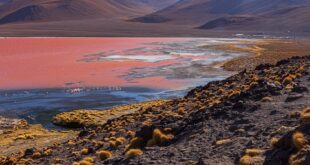Discovering Earth Science
Earth Science talks about everything connected to our planet – from its physical composition, its climate, and its evolution over time. It’s a vital part of the scientific blueprint that has helped establish our understanding of how life on Earth came to be. Everything around us – the air we breathe, the land we walk on, and the waters that surround us – has been made possible by our planet’s Earth Science. But how exactly did Earth Science play a part in shaping the world we live in today? Let’s take a closer look.
The Significance of Earth’s Composition
When we speak of the Earth’s composition, geologic or tectonic plates come to mind. While both play a significant role in shaping our planet, it’s important not to underestimate the value of the Earth’s internal structure too. Comprised of the core, the mantle, and the crust – all of these layers shape our world in ways we’ve been trying to discover with the help of Earth Science.
- The Core – consists mainly of iron and nickel and produces the Earth’s magnetic field. The field acts as a shield that protects the planet from solar wind besides keeping it in orbit around the sun.
- The Mantle – located above the core, it’s made of magma and other molten materials. It’s what helps generate magma and earthquakes besides influencing tectonic plate movement.
- The Crust – a thin layer compared to either of the previous two, and what distinguishes the planet from everywhere else in the solar system. It’s on the Earth’s crust that all the continents, mountains and oceans are made – all of which made a significant contribution to the emergence of life on our planet.
Earth’s Relationship with the Sun
Our planet’s synthesis of life has a profound linked influence with our home star – the sun. Earth’s distance from the sun dictates our climate, seasons, and atmospheric make-up. Without the right levels of solar radiation, no living organism could survive. As a result, Earth Science has paid close attention to studying the sun. It’s how we know that the natural light produced by sun can carry both positive and negative ramifications for us, and through sunscreens and varying exposure times, we strike a healthy balance to avoid sunburns to melanoma.
The Hydrosphere, Atmosphere, and Biosphere
Earth has three interconnected systems supporting life: the hydrosphere, the atmosphere, and the biosphere. All interconnected they constitute the harmony on this planet we call home.
- Hydrosphere – includes all water-based components on earth. The rain we receive and the oceans we have may seem ordinary, but they’re not. Without a balanced hydrosphere to climate regulation, life on Earth as we know it would be impossible.
- Atmosphere – which airspace makes up what’s generally surrounding and bound to the Earth’s surface. At zero air pressure, the atmosphere ceases to exist, but within it, you’ll find the pressure and temperature combine to make our climate. Besides gaseous particles like oxygen and nitrogen that make up the air we breathe in, the atmospheric cloud that helps in repelling cosmic radiation enables life to flourish on Earth.
- Biosphere – A complex network of various ecological systems, the Biosphere includes all living organisms on Earth. Her biodiversity includes bacteria, biofilms, fungi, plants, viruses, and animals. Without biosphere plants consuming atmospheric CO2 into oxygen and instrumental organisms, it’d be impossible to transfer matter and energy interchangeably through different parts of the biosphere.
Conclusion
These elements are crucial and must forever be secured, studied, and sought to understand better. Earth science plays an essential role in enabling us to treat our planet with affection, to ensure it maintains its natural habitat throughout the coming centuries. As vast and complicated as the earth may sound to understand, Earth Science aims to explore it one layer at a time, to establish a near-perfect blueprint of functions determining life here on our precious earth.
 Mind Uncharted Explore. Discover. Learn.
Mind Uncharted Explore. Discover. Learn.




